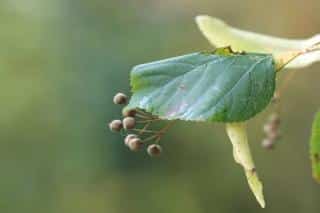

Lime, apart from the usage that is made of its flowers in infusions, is a very ornamental tree.
Lime tree or Basswood facts
Name – Tilia
Family – Malvaceae (mallow family)
Type – tree
Height – 16 to 130 feet (15 to 40 meters)
Exposure – full sun, part sun
Soil – ordinary
Foliage – deciduous – Flowering – summer – Harvested part – flower
Since it grows very all, it will need space to develop well.
It is recommended to plant your lime tree in fall to allow for root development before winter.
If purchased in a pot or in a container you may nonetheless plant until spring while avoiding frost spells.
It isn’t really necessary to prune lime, but if you must prune and reduce branches, do it between the months of November and March, but never while it’s freezing.
For larger branches, it may be smart to apply pruning paste on the wounds to avoid having certain diseases move in.
Lime tree flowers are generally harvested at the beginning of summer but depending on the area, the harvest may happen sometime during the most part of summer.
The harvest season matches the blooming season for the lime tree.
 This harvest season is very short and only lasts 2 or 3 days.
This harvest season is very short and only lasts 2 or 3 days.Species and varieties of lime tree or basswood
There are 45 lime tree cultivars. Each can be used and all are ornamental. You simply have to choose!
Lime tree is notorious for its herbal tea and infusions, but it also is a tree with a majestic bearing.
Its leaves have silvery undertones that make it seem very light, whereas its branches which are quite dense will bring fresh, cool shade during summer.
You’ll appreciate its exquisite fragrance and bees are drawn to it for its nectar.
Lime tree is traditionally used for herbal tea to alleviate sleeping disorders and soothe restlessness in adults and children alike.
Lime tree or basswood has no side effects whatsoever and can be ingested by the whole family.
The basswood flower also has recognized properties against spasms and fever.
Lastly, studies have shown that regular drinking of lime tree-based herbal tea helped augment natural defenses, especially against colds and common flu.
As soon as they open, collect the flowers before they dry and fall.
Dry them outdoors and use them for herbal tea over the winter with a nice spoonful of honey!